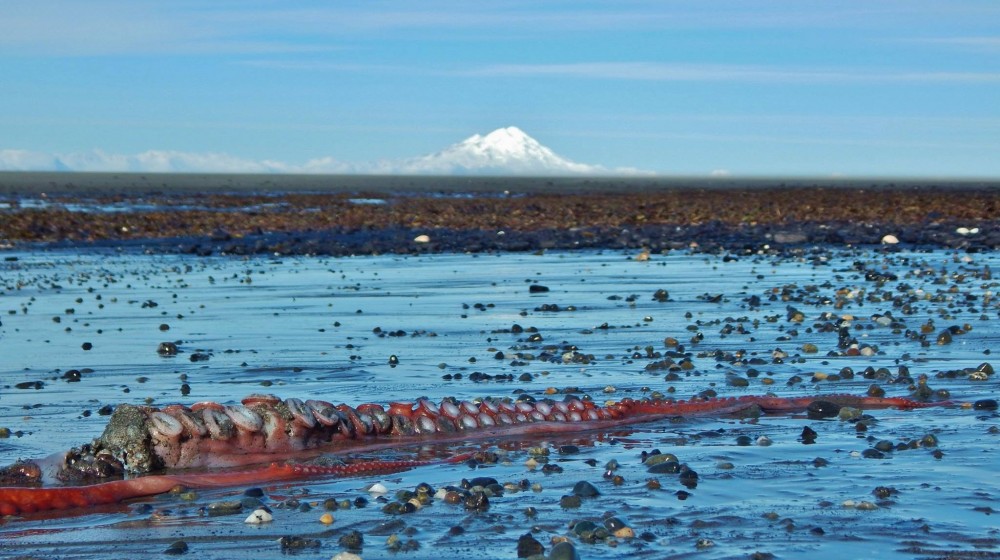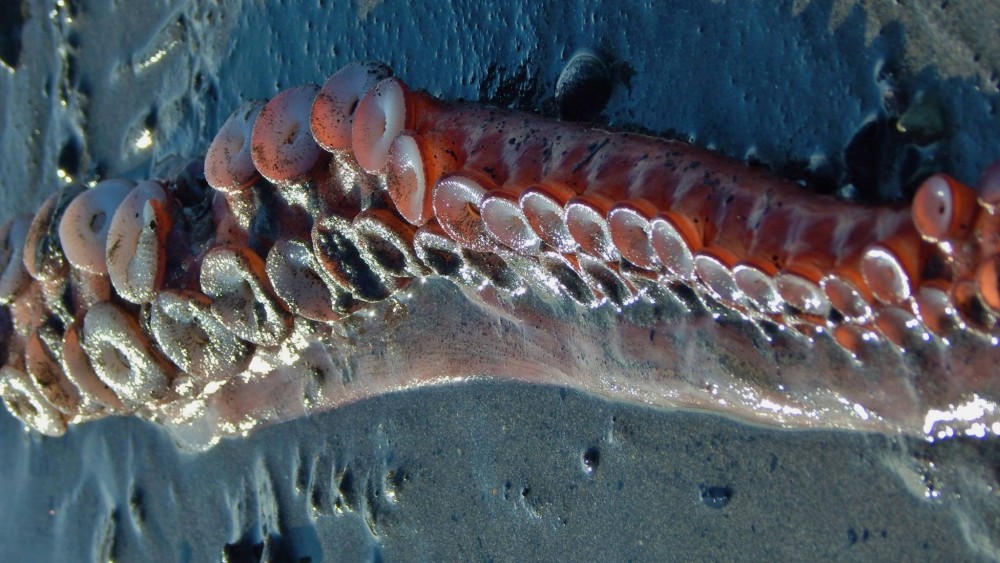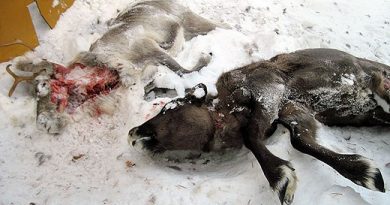A beachcomber did a ‘happy dance’ after this unusual discovery in Anchor Point

Ginger Frizzell was walking along the beach Wednesday in Anchor Point with camera in hand, as she does several times a week, when she spotted a large purple and red object glimmering in the sunlight.
“I was just walking on the first nice, sunny day we’ve had in a while,” Frizzell said in a phone interview Thursday. “I saw something and wasn’t sure what it was. The closer I got, the more exciting it was. I did my little happy dance when I found it.”
The Homer resident had found what appeared to be two large cephalopod arms on the sandy shore of the Anchor River State Recreation Area during low tide. She estimated the longer arm measured 5 1/2 feet.

Frizzell posted some of her photos on the Facebook page My Home is Alaska. Since Wednesday evening, the posting has been shared 2,200 times. And everyone wants to know (or seems to know) where the animal parts came from.
“I thought it was the coolest thing I’d ever found, but I didn’t expect it to get this reaction,” Frizzell said. “I’ve had people tell me they’ve lived here for 20 years and never seen anything like it.”
Dr. Ken Goldman, a Homer-based fisheries biologist with the Alaska Department of Fish and Game, said he thinks the arms might be from a giant red octopus, “a common species in Cook Inlet and Gulf of Alaska waters” that can reach 70 pounds and 14-foot arm lengths.
Fish and Game won’t be visiting the beach looking for the arms, so they won’t be assessed unless someone brings them in, Goldman said.
But the tide likely washed away both arms, Frizzell said. That’s what she has told inquiring minds who want to know about the particulars of the discovery.
“I walk at low tide because that’s when you find the good stuff,” she said.
She regularly sends photos to Jellywatch.org, a website meant to assist marine biologists worldwide. Contributors are encouraged to report sightings of jellyfish, sea mammals and squid, among other finds.



